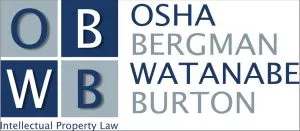On April 30, 2025, the China National Intellectual Property Administration (CNIPA) released Draft Amendments to the Patent Examination Guidelines (Comment Draft). The Comment Draft introduces revisions that reflect CNIPA's response to developments in emerging technologies targeting AI and video codec sectors as well as certain practical examination issues. Some key proposed changes are as follows:
1. New Section on Bitstreams (Section 7 of Chapter 9, Part II):
CNIPA has proposed new guidelines specifically addressing invention patents involving bitstreams, such as those used in video and audio encoding/decoding. The main clarifications include a statement that bitstreams per se (i.e., data content alone) are not patentable. However, if the bitstream is generated by a novel and inventive encoding/decoding method and used in a specific technical context, such as video storage or streaming, it may constitute a patent-eligible technical solution.
This proposed amendment aims to provide IP right holders with the option to claim rights in a specific segment, thereby balancing the interests of such right holders, implementers, and the public, and ensuring the sustainable development of the industry. However, CNIPA emphasizes that this does not imply that right holders are permitted to assert rights across multiple segments of the industry and obtain licensing revenues disproportionate to their actual technical contributions.
2. AI-Related Examination Standards(Section 6 of Chapter 9, Part II):
It is worth noting that CNIPA recently issued a policy document, Guidance for Patent Applications for AI-related Inventions (Pilot) (Pilot Guidance), on the last day of 2024. This document is not part of the Patent Examination Guidelines, but is intended as an interpretation of CNIPA policies in the interest of clarifying certain issues on the burgeoning AI-related patent applications. The Pilot Guidance notes that AI-related patent applications may be divided into conceptual categories as follows: 1) applications related to AI algorithms or models per se; 2) applications related to functions or applications based on AI algorithms or models; 3) applications related to inventions made with assistance of AI; and 4) Applications related to inventions generated by AI.
Another notable aspect of the Pilot Guidance is clarification on patent eligibility of AI-related inventions. To be patent eligible, a claim must include at least one technical feature. Further, the claim, as a whole, must qualify as a "technical" solution. Without limitation, an AI-related solution is "technical" in nature if 1) the AI algorithm or model processes data that has a specific technical meaning in a technical field (e.g., a method of recognizing and classifying images with a neural network model), 2) the AI algorithm or model has a specific technical association with the internal structure of the computer system (e.g., a method of neural network model compression for memristor accelerators), or 3) the AI algorithm in the claim processes big data in a specific application field to mine an inherent association that conforms to laws of nature (e.g., a method for predicting food safety risks based on the inherent characteristics that microorganisms and their secreted toxins in food increase over time).
The Pilot Guidance also lays out other principles related to sufficiency of disclosure, inventive step, and even social ethics in AI-related patent applications. The proposed amendments in the AI-specific section in the Comment Draft have followed and embodied those principles.
The Comment Draft clarifies how Article 5 of the Patent Law applies to AI and "big data related" inventions. It provides certain examples of patent denial due to violation of law or social ethics (e.g., unauthorized data collection that violates the Personal Information Protection Law and ethical risks in autonomous driving).
The Comment Draft also provides examples to clarify the inventive step requirement for AI-related inventions. In the analysis of one example that has inventive step, the stated reason is that, in face of the technical problem, the invention has adapted the convolutional pathways and pooling layer hierarchies of the neural network compared to the prior art. A general principle is that contribution of algorithmic features to the technical solution should be considered if the algorithmic features and the technical features are functionally supportive of, and interplay with, each other.
Notably, Section 6.1 specifies that, when necessary, examination shall take into consideration the contents of the description. This concerns not only examination under Article 5 of the Patent Law mentioned above but also sufficiency of disclosure. To satisfy the sufficient disclosure requirement, Section 6.3.1 specifies that, if the invention involves the construction or training of an AI model, the specification should clearly describe the essential modules, layers, or connection relationships of the model, as well as the specific training steps and parameters required; and if the invention relates to the application of an AI model or algorithm in a specific field or scenario, the specification should clearly explain how the model or algorithm is integrated with the particular field or scenario, including how the input and output data are configured to demonstrate their inherent relationships. Two related examples are provided in Section 6.3.3. The proposed new guidelines aim to ensure that a person skilled in the art can implement the solution of the invention based on the content disclosed in the specification. A general principle is that a person skilled in the art should be able to "fill in the blanks" based on common knowledge with respect to any undisclosed aspects and be certain that the technical problem can be solved by filling in such blanks.
3. Revision Relating to Invalidation Procedures (Section 3 of Chapter 3):
The Comment Draft further refines the qualification for petitioners in invalidation proceedings. Section 3.2 provides that an invalidation request shall not be accepted if it does not reflect the genuine intention of the petitioner. This provision is to address instances in practice where invalidation requests have been filed in the name of another party without authorization, often accompanied by falsified petitions or power of attorney documents.
With respect to the effect of invalidation decisions, Section 3.3 has been revised to provide that, once a decision has been rendered in an invalidation proceeding, any subsequent invalidation request based on the same or substantially the same grounds and evidence shall not be accepted. CNIPA explains that "the same or substantially the same" refers to situations where the grounds or evidence have merely been adjusted or reformulated in form, but are not substantively different in terms of legal facts. These cases should fall within the scope of the estoppel rule.
Nevertheless, the determination of whether grounds or evidence are substantially the same may involve a degree of subjectivity in practice. Furthermore, arguments or evidence that were not raised or substantively considered in the previous proceeding—due to time constraints or other procedural reasons—may still form the valid basis of a new invalidation request. As such, whether this revision can effectively achieve the intended goals of enhancing patent stability and reducing unnecessary litigation burdens on patentees remains a subject for further discussion.
In addition to the key revisions already noted, the Comment Draft also includes proposed amendments related to certain preliminary examination procedures and the subject matter of plant variety protection.
The content of this article is intended to provide a general guide to the subject matter. Specialist advice should be sought about your specific circumstances.




